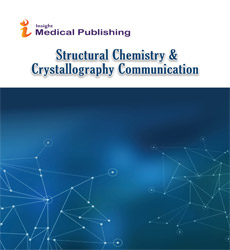Designing chiral metal-organic assemblies
International Conference on Applied Crystallography
October 16-17, 2017 | Chicago, USA
Michal Lahav
Weizmann Institute of Science, Israel
ScientificTracks Abstracts: Struct Chem Crystallogr Commun
DOI: 10.21767/2470-9905-C1-002
Abstract
Coordination-based polymers and metal-organic frameworks (MOFs) have been explored since their serendipity discovery by a Berlin color-maker named Diesbach at the beginning of the 18th century. These intriguing materials combine metal-coordination chemistry with the often complex formation of large supramolecular structures and may exhibit optical, catalytic, redox and magnetic functions derived from their metallic elements. Such materials are currently generated by the dozens in a gold-rush-type search for unique properties mainly related to the storage and release of energy (e.g., hydrocarbons, dihydrogen) at ambient temperatures and pressures. How the molecular components, metal salts and experimental conditions control the dimensions, shapes and homogeneity of these coordination-based materials is barely known. Moreover, the formation of chiral MOFs and MOFs confined on surfaces is especially challenging. We demonstrated the controlled generation of various homogeneous MOF structures from solution and on surfaces. Using a versatile ligand system that binds late-transition metals in a defined manner, we address various challenging issues related to the mechanism underlying the formation of such homogeneous structures at the (sub)-microscale, their magnetic and electronic properties and other functions. These new chiral materials have been characterized by a series of complementary methods, including electron microscopy, X-ray powder diffraction, atomic force microscopy and synchrotron X-ray reflectivity.
Biography
Michal Lahav has completed her BSc and PhD studies in Chemistry from the Hebrew University of Jerusalem, Israel. She was a Postdoctoral Researcher at the Weizmann Institute of Science for two years before she moved to Harvard University, where she studied nanochemistry. After two years of postdoctoral work in the United States, she returned to Israel and started to work as a Scientific Advisor at the Weizmann Institute of Science. She was appointed as an Associate Staff Scientist in the Department of Organic Chemistry in 2011. Her interdisciplinary materials chemistry research is related to the self-assembly of metallo-organic materials for energy storage and for electrochromics whose products are now being patented. Her work is related to fundamental understanding of the formation and electronic properties of these metallo-supramolecular architectures. Her prizes and honors include the Dr. Maxine Singer Prize for Outstanding Staff Scientists.
Google Scholar citation report
Citations : 275
Abstracted/Indexed in
- Google Scholar
- China National Knowledge Infrastructure (CNKI)
- Directory of Research Journal Indexing (DRJI)
- WorldCat
- Geneva Foundation for Medical Education and Research
- Secret Search Engine Labs
- CAS (Chemical Abstracting Services)
Open Access Journals
- Aquaculture & Veterinary Science
- Chemistry & Chemical Sciences
- Clinical Sciences
- Engineering
- General Science
- Genetics & Molecular Biology
- Health Care & Nursing
- Immunology & Microbiology
- Materials Science
- Mathematics & Physics
- Medical Sciences
- Neurology & Psychiatry
- Oncology & Cancer Science
- Pharmaceutical Sciences

